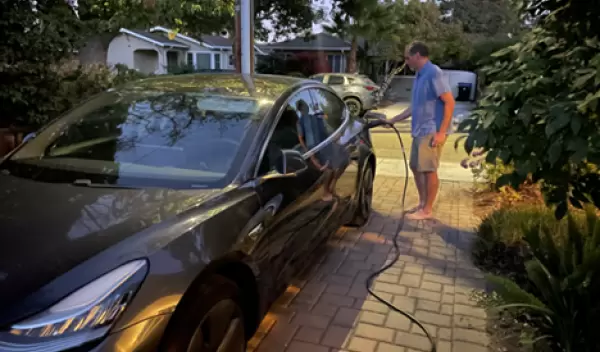
Charging cars at home in the evening is not the way to go, study finds
Many electric vehicle owners charge their cars at home in the evening or overnight. But according to a new study by researchers at Stanford, there is a better way.
For the study, funded in part by the U.S. National Science Foundation and published in Nature Energy, researchers applied their model to the Western United States and examined the stress the region's electric grid would come under by 2035 from growing EV ownership. In a little more than a decade, they found, rapid EV growth alone could increase peak electricity demand by up to 25%, assuming a continued dominance of residential, nighttime charging.
To limit the high costs of a new capacity for generating and storing electricity, the researchers say that drivers should move to daytime charging at work or public charging stations, which would also reduce greenhouse gas emissions.
"We encourage policymakers to consider utility rates that encourage day-charging, and incentivize investment in charging infrastructure to shift drivers from home to work for charging," said the study's co-senior author, Ram Rajagopal, a civil and environmental engineer at Stanford.
In February, cumulative sales of EVs in California reached 1 million, accounting for about 6% of cars and light trucks. The state has targeted 5 million EVs on the road by 2030. When that hits 30% to 40% of cars on the road, the grid will experience significant stress without major investments and changes in charging habits, said Rajagopal. Building that infrastructure requires significant lead time and cannot be done overnight.
Once 50% of cars on the road are powered by electricity in the Western U.S., more than 5.4 gigawatts of energy storage would be needed if charging habits follow their current course. That's the capacity equivalent of five large nuclear power reactors. A big shift to charging at work instead of home would reduce the storage needed for EVs to 4.2 gigawatts.
If most EVs continue to charge at night, then the state will need to build more generators – likely powered by natural gas – or expensive energy storage on a large scale.
